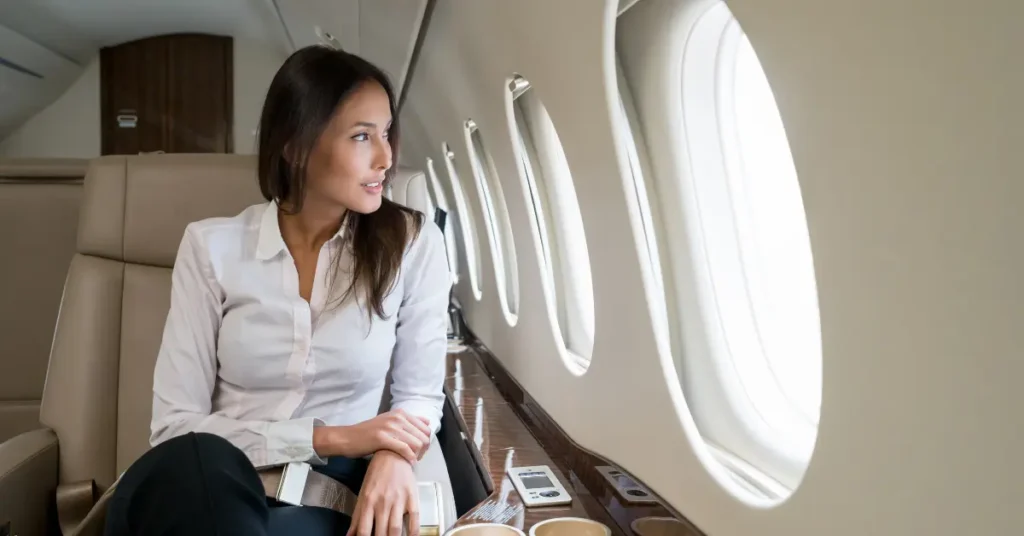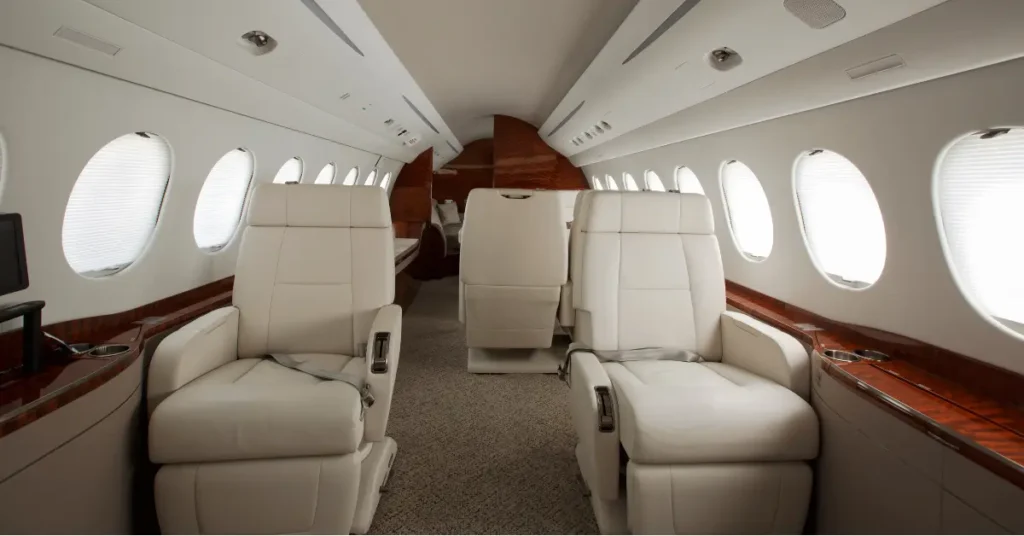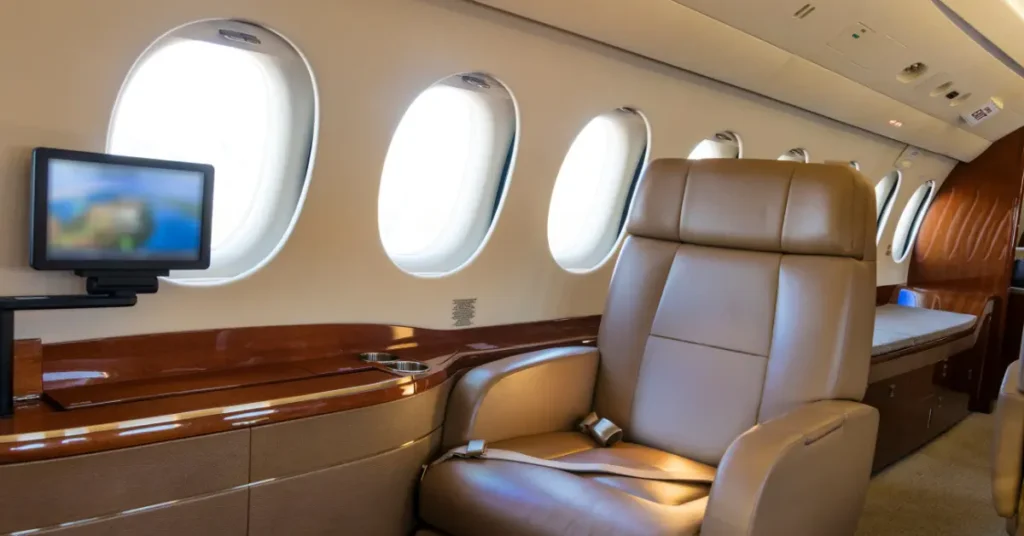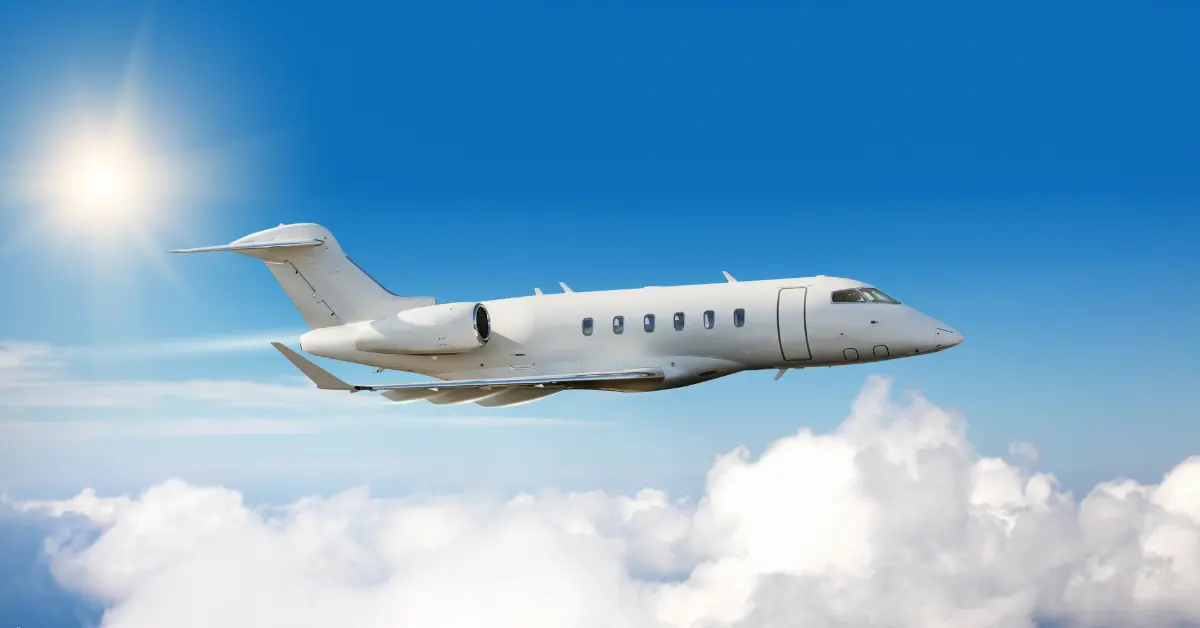In today’s fast-paced world, travelers are rethinking what it means to fly with ease and efficiency. Commercial flights often come with crowded terminals and rigid schedules. This has led many business professionals and leisure seekers to consider the benefits of flying private. Private aviation grants full control over every stage of the journey. Travelers appreciate the convenience of tailored flight times and direct routes. What was once seen as a luxury reserved for celebrities is now recognized as a strategic tool for effective time management and stress reduction.
Seamless Ground Experience: Skip the Hassle, Start Sooner
Dedicated Terminals and FBOs
Flying private begins with an entirely different airport experience. Instead of navigating crowded terminals, passengers use Fixed-Base Operators (FBOs), which are specialized facilities built specifically for private flights. These terminals offer quiet lounges, private meeting rooms, and concierge service, all in a calm environment. For travelers who value privacy or need to maximize productivity, FBOs eliminate the distractions of commercial airports. You’re escorted straight to your jet the moment you arrive. This elevated service is one reason travelers continue to choose a private jet vs. commercial options.
Arrive Minutes Before Departure With Streamlined Security
Security is still strict but far more efficient, offering convenience without compromising safety. Upon arrival at the FBO, identification is quickly verified, and luggage is checked and loaded directly. There is no need to remove shoes, laptops, or belts in a crowded security area. This time-saving process allows travelers to arrive as little as 15 minutes before takeoff. It’s one of the most precise answers to the question: why fly private? The ability to reclaim your time at the airport is a significant upgrade in the travel experience.

Direct Access to 5,000+ Secondary Airports
One of the most underrated advantages of flying private is access to thousands of airports that commercial airlines don’t service. In the United States alone, private jets can land at over 5,000 airports—far exceeding the reach of most carriers. An expanded network means you can fly directly to destinations that are closer to your final stop, and you skip airport lines or secondary flights. Whether it’s a remote business location or a private vacation estate, private aviation gets you there faster. Efficiency is a huge benefit when deciding to book private jets for important trips.
Door-to-Plane Vehicle Access
Many services include luxury car pick-ups or allow passengers to drive directly onto the tarmac, minimizing any disruption. Once the vehicle reaches the FBO, trained staff handle your luggage and coordinate a seamless transfer to the aircraft. For those on tight schedules, this efficiency is unmatched. This is part of what makes luxury private air travel so appealing to those who value comfort and time.
In-Flight Comfort and Customization
Luxury Private Air Travel Amenities
Flying private is about transforming the entire in-flight experience into something far more personalized. The ability to book charter flights allows you to select a jet layout that suits your specific needs. Here are a few standout amenities:
- Customizable Seating Arrangements: Unlike the fixed row-and-aisle design of commercial aircraft, private jets offer configurable seating that adapts to your preferences or group needs. Chairs can swivel to face one another for in-flight meetings or transform into flat beds for sleeping. Seating layouts can also be tailored in advance depending on the purpose of the trip. Some configurations include club-style setups with tables for dining or discussion, while others incorporate L-shaped sofas and ergonomic workspace areas. This level of flexibility supports a more natural social interaction during longer flights.
- Private Lavatories: Access to a full-service lavatory with shower facilities adds an unmatched level of convenience and comfort. Select large-cabin aircraft such as the Gulfstream G650ER or Bombardier Global 7500 feature spacious bathrooms with rainfall showers, heated floors, and ample counter space. These facilities are ideal for executives who need to head straight to meetings upon arrival or travelers who prefer to arrive feeling refreshed and well-groomed. The bathrooms are typically stocked with high-end toiletries, plush towels, and vanity lighting, creating a spa-like atmosphere thousands of feet in the air. These private spaces are designed with both aesthetics and functionality in mind, often featuring natural finishes such as marble or wood veneer.
- Dedicated Bedrooms For True Rest: For those who value uninterrupted rest during their journey, aircraft equipped with separate sleeping quarters offer a sanctuary in the sky. These full-size bedrooms, typically found on ultra-long-range jets, include queen or even king-size beds with luxury linens and blackout window treatments. The environment is designed to promote restful sleep, featuring noise-reducing insulation, temperature control, and even circadian lighting systems that adjust according to destination time zones. Dedicated bedrooms are especially beneficial for overnight flights or when transitioning between different time zones, as they help passengers manage jet lag more effectively.
- Onboard Entertainment Systems: Systems include ultra-high-definition screens, surround sound audio, satellite television, and integrated streaming platforms like Netflix, Hulu, or Apple TV. Some aircraft also offer in-flight entertainment systems loaded with movies, music, and presentations, allowing passengers to customize their experience without relying on external connections. High-speed, in-flight Wi-Fi enables video calls, cloud-based work, or multiplayer gaming. These systems double as presentation tools, complete with HDMI ports, projection screens, and wireless display options. The immersive quality of these setups ensures that passengers can unwind or stay productive with the same convenience as in their office.
- Fine Dining Experiences: Gourmet dining aboard private jets goes far beyond reheated airline meals. It’s a culinary experience tailored to your preferences. Many private charters employ in-flight chefs or partner with luxury catering services that offer fully customizable menus. Everything is presented with restaurant-quality detail, often served on porcelain dishes with real silverware and crystal glassware. Some aircraft even feature full-service bars with stools and mixology stations, allowing for a celebratory atmosphere mid-flight.
These features elevate private jet amenities to a level that surpasses even the most elite first-class experiences.

Pet-Friendly and Family-Oriented Features
Private aviation also caters to the details that commercial travel overlooks. Pets can travel in-cabin with their owners rather than in cargo holds. Active travelers can bring their gear without worrying about damage or loss. Families with children appreciate the space for sleeping, playing, and eating on their schedule. Thoughtful touches reflect how every aspect of charter plane booking can be designed to support your lifestyle.
Flexibility and Control in Scheduling
Last-Minute Adjustments With No Change Fees
One of the most frustrating parts of flying commercial is dealing with rigid schedules and steep change fees. Private aviation offers the flexibility to adjust your itinerary as your plans change. Whether a meeting runs late or you want to depart at a new time, your flight can adapt without financial penalties. This ability to make last-minute changes adds a practical dimension to the overall experience. It is a key reason so many people choose to find charter flights that work for their unique agendas.
Aircraft on Standby for Meeting Wrap-Ups or Delays
Traveling on a tight schedule often means dealing with unpredictable delays, especially in business. The aircraft is typically on standby until you’re ready to leave. There’s no need to rush through conversations or wrap up meetings prematurely. The crew waits for your signal, ensuring your travel works around your calendar, not the other way around. It reinforces why many prefer jet flight price models that deliver more value through flexibility rather than rigid timelines.
Route Customization
Coordinating flights on commercial airlines becomes a logistical puzzle when a day involves visiting more than one destination. Private jets simplify this by offering direct, multi-city routing in a single day. You can land in smaller airports closer to your stops, hold meetings in multiple locations, and return home without the exhaustion of long layovers. Tailored flight paths offer a better return on time and investment.
Fast Booking and Confirmation
Booking a private flight no longer requires lengthy phone calls or complex arrangements. Today’s digital tools enable travelers to view availability, select their preferred aircraft, and confirm itineraries within minutes. Mobile platforms and booking apps have streamlined the process, making private flying more accessible. On-demand services can match your request with an aircraft that fits your requirements. The evolution of online services has made it much easier to book private jets on short notice.
Strategic Cost and Value Considerations
Understanding Private Jet Travel Cost Components
It’s essential to know how the total is calculated. Below are some of the most influential cost components you’ll encounter when booking a private flight:
- Aircraft Type and Size: One of the primary cost drivers in private jet travel is the category of aircraft selected. Jets are typically classified into four major groups, and each comes with its own price structure based on hourly rate, fuel consumption, and capacity. Light jets, such as the Citation CJ2 or Learjet 75, are ideal for short trips and small groups, offering cost-effective efficiency with limited cabin space and range. In contrast, heavy jets like the Gulfstream G600 or Bombardier Global 6500 provide long-haul capability, full-service galleys, and sleeping accommodations. The larger the aircraft, the more fuel it consumes per mile, and the greater the personnel and maintenance requirements typically are. Choosing the right size jet for your travel needs is a balance between cost, range, passenger comfort, and onboard service expectations.
- Flight Hours and Route Distance: The longer your journey, the higher your bill. Each hour in the air incurs an hourly aircraft rate that covers fuel, crew wages, maintenance allocation, and wear on the aircraft. A short 1-hour regional flight might cost significantly less than a cross-country or international journey that involves 5–8 hours of flying. Additionally, routing inefficiencies can extend travel time and increase fuel usage. Trips that include multiple stops or pick-ups may also incur repositioning charges if the jet must travel empty between legs.
- Crew and Overnight Fees: The human element of private jet operations introduces another critical layer of expense. Pilots and crew members are often required to remain with the aircraft during layovers or multi-day itineraries, which means their accommodations and ground transportation must be factored into the trip cost. While same-day returns may not trigger these charges, longer or overnight stays usually do. In some cases, crew members must also be cycled out for regulatory reasons, such as exceeding their duty hour limits, which can necessitate the addition of a relief team. These extra personnel not only increase payroll costs but also require added coordination and logistics support.
By understanding these foundational pricing components, travelers gain a more accurate picture of what drives private jet expenses. This knowledge empowers clients to make informed decisions and engage with providers from a place of clarity rather than guesswork.

Empty-Leg Flights and Other Cost-Saving Opportunities
A lesser-known way to reduce the cost of private travel is by taking advantage of empty-leg flights. These are repositioning trips when a jet needs to return to its home base or head to another location for its next scheduled booking. Operators often offer these one-way flights at a steep discount. Travelers who are flexible with dates and destinations can find premium travel at a fraction of the regular rate. Booking tools now make it easier than ever to locate these offers, giving more people the opportunity to enjoy the luxury without the full private plane trip cost.
Safety, Health, and Environmental Factors
Pilot Experience and Aircraft Maintenance Standards
Operators are held to industry-specific standards, and many exceed the minimum requirements set by law. Pilots must complete advanced training tailored to their aircraft, and they often possess thousands of hours of flight time. Maintenance teams conduct thorough inspections before and after each flight, utilizing modern diagnostic systems to identify issues promptly. Unlike commercial airlines, where planes are cycled rapidly through tight schedules, private jets are inspected more frequently and cared for more attentively. This approach gives travelers greater peace of mind when picking private jet trips over conventional flights.
Eco-Conscious Options
Environmental concerns are now influencing how travelers choose to fly. Private aviation is adapting with more sustainable solutions, including the use of fuel-efficient light jets and carbon offset programs. These efforts enable travelers to minimize their environmental impact without compromising convenience. Choosing to book a seat on a private jet doesn’t mean ignoring sustainability; it can mean leading it.
Flying private is about reclaiming control over your journey. The combination of seamless ground logistics and unmatched flexibility gives travelers a powerful alternative to conventional flying. The experience eliminates the typical stressors of airports and airlines. The benefits of flying private begin before takeoff and extend well after you land, shaping a superior travel experience at every stage.

